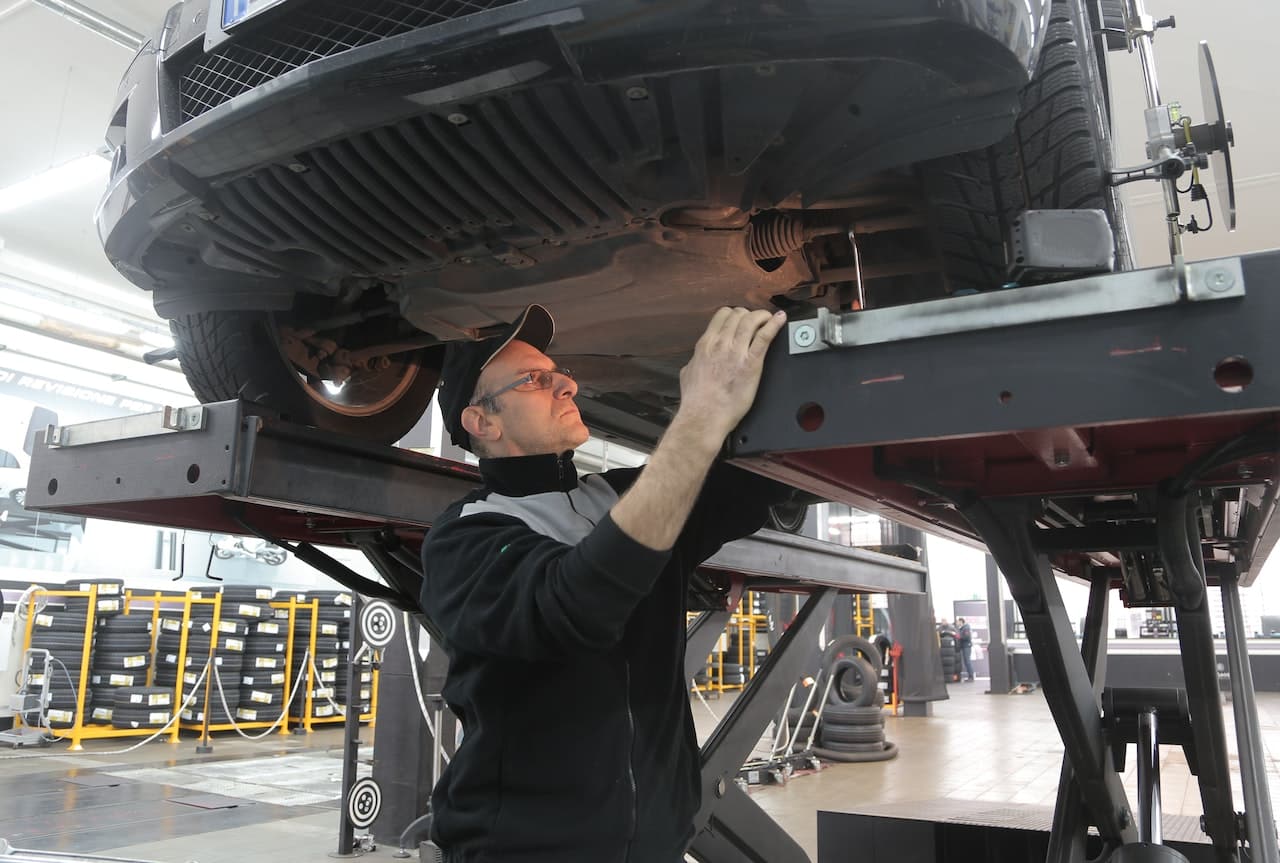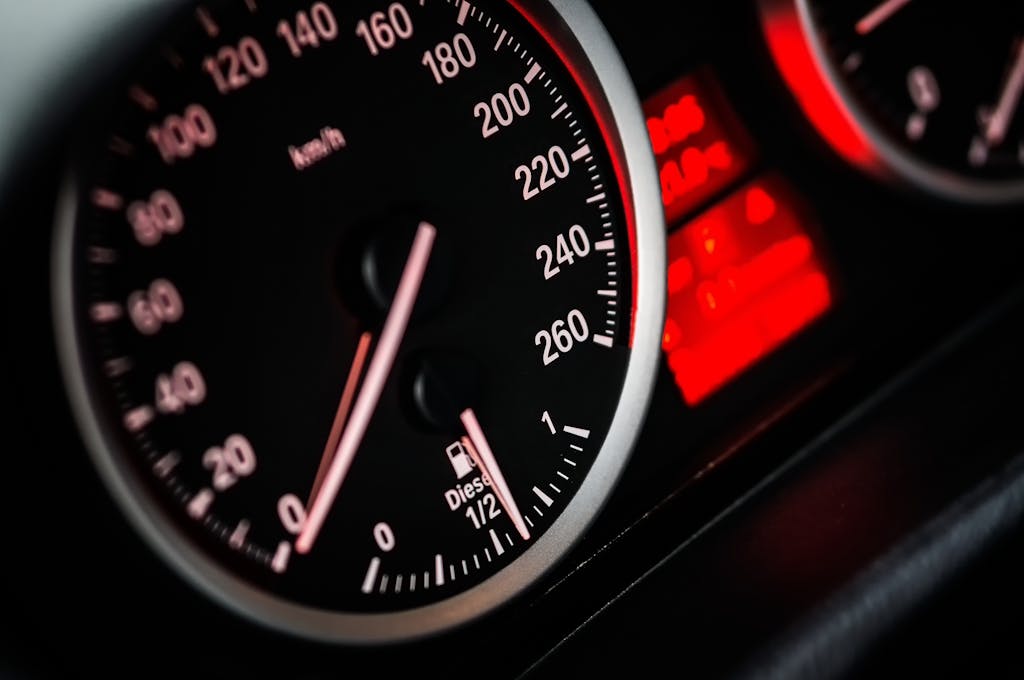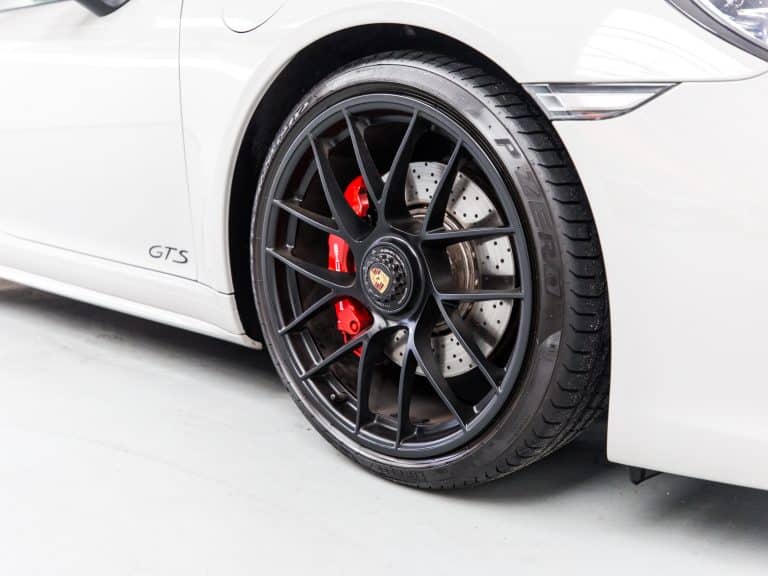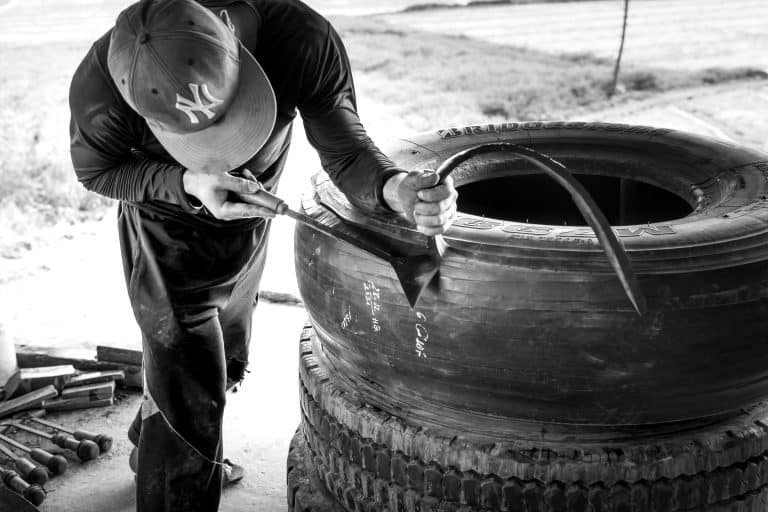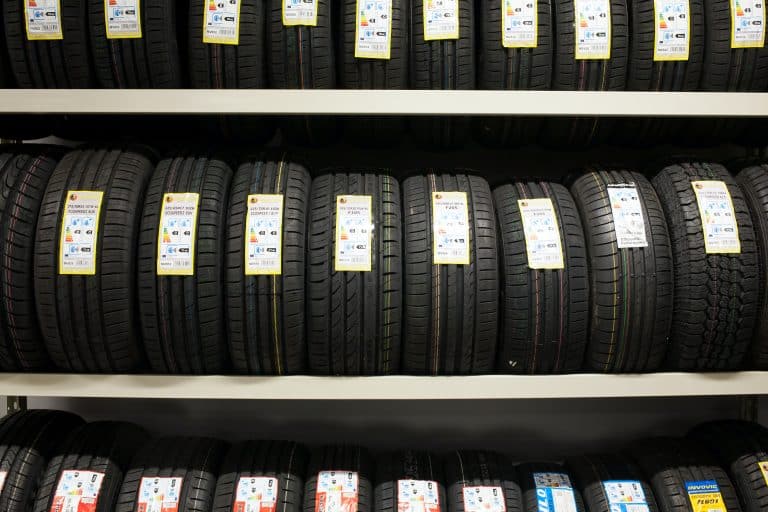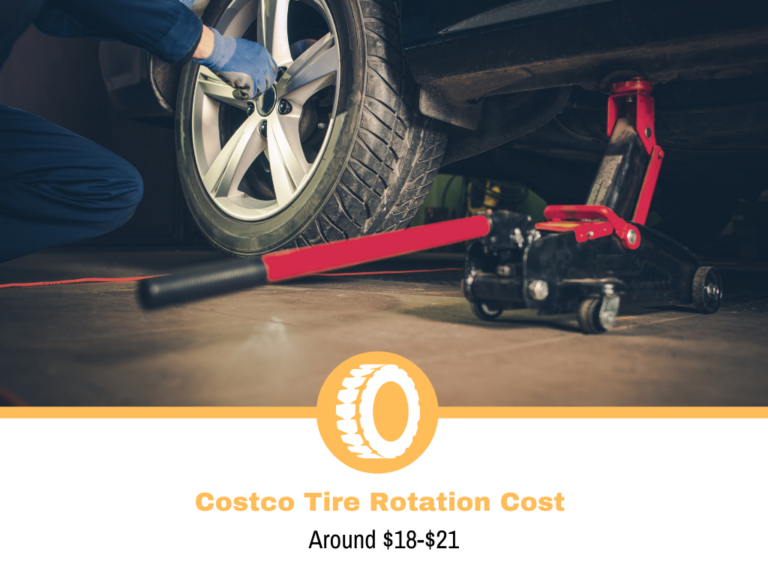Tire Rotation for All Wheel Drive
All-wheel drive is a system that sends power from a car’s engine to all four wheels. AWD, as its name suggests, does this to help your car drive better on icy roads than a car with front-wheel drive or rear-wheel drive.
Motorists from places where the weather can change at any time prefer AWD cars because they have more grip and offer more safety. As with most tires, AWD tires should be rotated regularly to keep them running at their best.
Even though it’s a common misconception that all-wheel drive vehicles don’t need to have their tires rotated, they do. Find out when and how to rotate AWD tires as you scroll along.
Tire Rotation for AWD
There are different ways to turn tires for several reasons. Most of the time, though, it’s because of the axle that moves the car forward. Both in this case.
Most all-wheel drive cars and trucks have a rear-wheel drive bias, and when the tires on AWD vehicles are rotated, the patterns are usually the same as patterns for rear-wheel drive vehicles.
As with most pieces of advice, though, be sure to read your owner’s manual to find out what your car’s makers recommend. We listed the different AWD patterns and when to use each one.
All-Wheel Drive Tire Rotations
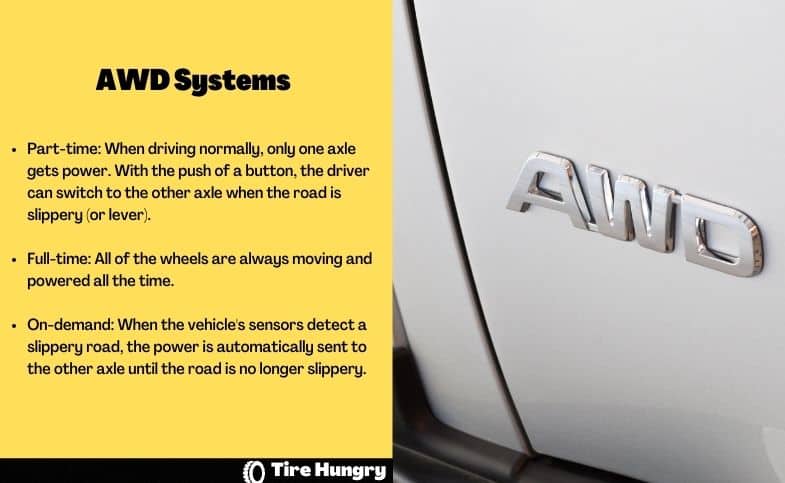
Even though an all-wheel drive vehicle gives traction to all four tires, the rear tires often wear out a little more.
Since most all-wheel drive systems use the rear axle more than the front axle, and since rotation patterns tend to focus on the drive axle, AWD rotation patterns look like those of rear-wheel drive vehicles.
Since rear bias isn’t always the case, we emphasize checking your owner’s manual for the manufacturer’s recommended rotation pattern.
Rearward Cross Pattern
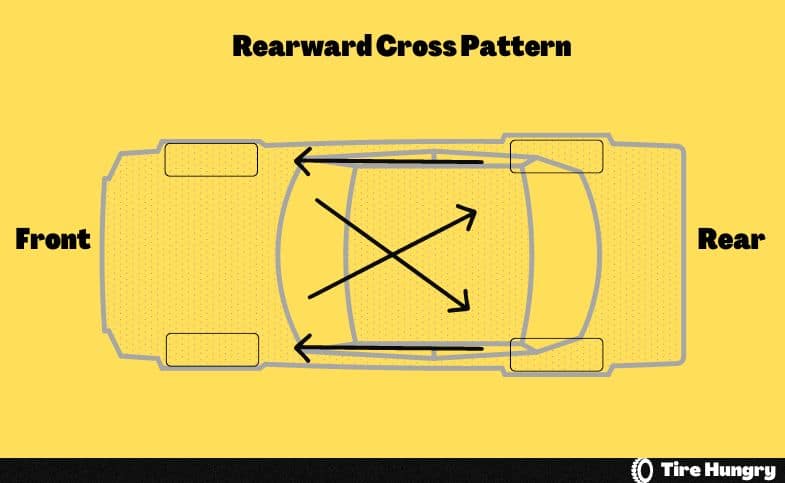
Out of the two main patterns for all-wheel drive and four-wheel drive vehicles, the rear cross is a little bit better.
The rearward cross moves the front tires back and across to the opposite sides of the vehicle. The back wheels of a car or truck move forward, but they stay on the same sides of the vehicle.
X-Pattern
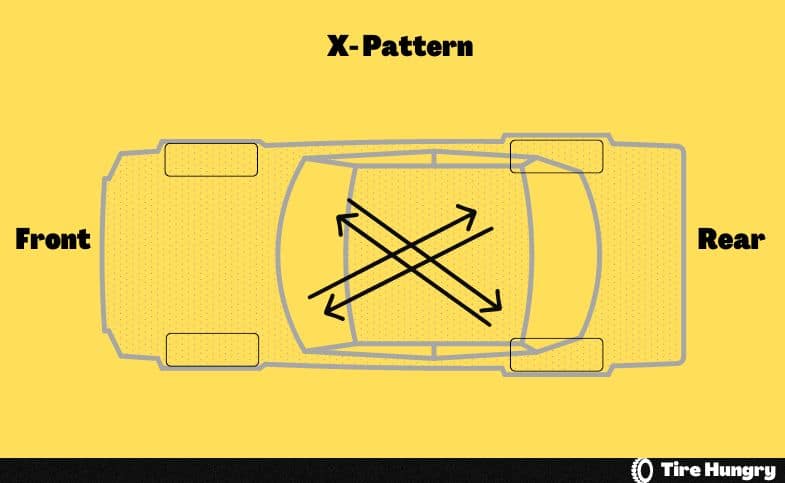
The X-Pattern can be used instead of the backward cross. Even so, it doesn’t have the advantage of being able to move the tires to every position. Each tire can only be moved to one other position.
The X-Pattern is easy and simply moves the front tires to the back and to the other side of the car. The back tires move forward and cross to the vehicle’s opposite sides.
Best AWD Tire Rotation Pattern
The rearward cross is the best way to rotate tires on a car with all-wheel drive. It ensures that each tire will move to each wheel position after a few turns. It also tries to make the wear on the back tires more even by ensuring that the back tires always cross to the opposite side each time the wheel turns.
Tire Rotation for Staggered All-Wheel Drive Tires
When the front and back wheels and tires are different sizes, this is called “staggering.” For example, all-wheel drive sports cars with a larger-than-usual rear bias might have wider tires on the back to give the car more grip when accelerating and keep it from oversteering when turning.
Wheels and tires with different sizes can’t be moved from the front to the back. They have to stay on the same axle. You can only turn them from side to side. Tire rotations from side to side don’t help tires as long as rotations from front to back, but they do help even out uneven wear between the two sides.
Side to Side
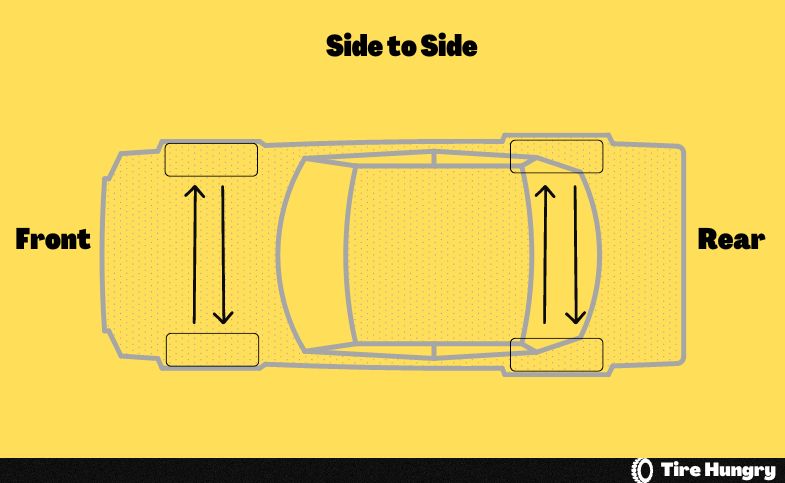
Tire Rotation on All-Wheel Drive with Full Size Spare Tire
If you have an all-wheel drive vehicle with a full-size spare tire on a matching wheel, rotating the tires regularly will extend the life of the whole set of tires and make sure the spare tire doesn’t go to waste before it dries out and falls apart from age.
If the spare tire is used often, it is also much more likely to be in good shape, adequately inflated, and hold air well.
Rearward Cross 5-Tire Rotation Pattern
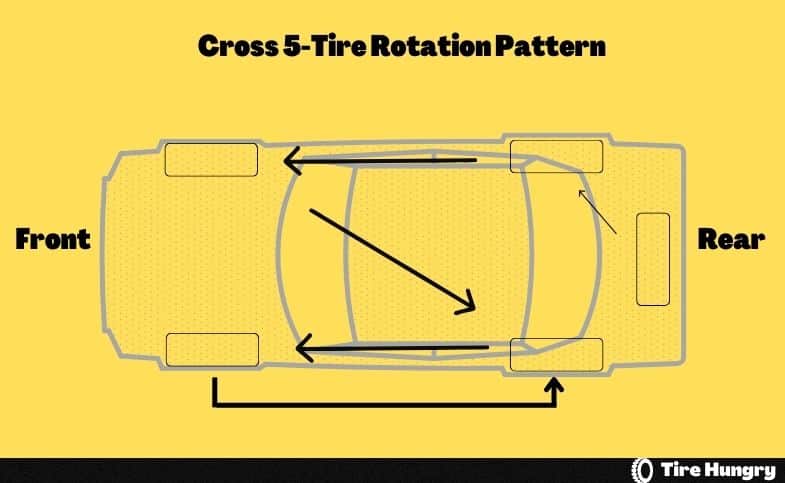
The best way to add a spare tire to the regular rotation of an AWD is to use the rearward cross 5-tire pattern.
As the name suggests, it is just an extra-tired version of the rearward cross. The only difference is that the front tire on the driver’s side moves to the place of the spare, and the spare moves to the place of the rear wheel on the passenger’s side.
Do All-Wheel Drive Tires Need To Be Rotated?
Logic will tell you that an all-wheel drive vehicle wouldn’t need regular tire rotations because power is always going to all wheels, so they should all wear out at the same rate. Some people who own AWD vehicles may have had this thought.
But, when it all boils down, rotating your tires is the second most important thing you can do to your all-wheel drive vehicle to make them last longer. Checking your tire pressure is the most important.
Slip is what causes a tire to wear out. Think back to physics class in high school, when we learned about friction. The amount of force needed to move something along a surface equals the coefficient of friction times the object’s weight.
When driving, reaching this level of force, or wheel torque, usually causes a wheel to spin when accelerating or lock up when braking. Every time a tire slips, rubber molecules are ripped off the tread and left on the road.
It can also slip when a car turns a corner or changes direction. Engineers talk about a tire’s slip angle, which is the difference between where the tire is pointing and where it actually goes.
Perfect Balance and Rotation
For long, even wear, you need to rotate your tires regularly. If you let each tire run on every wheel position over the tire’s life, the tread pattern’s duty cycle will be mixed up. This will keep uneven wear patterns from setting in and shortening the life of the tread.
Uneven wear patterns also make tread noises that are too loud and unnecessary.
Going back to slip angle, since most cars are made to have some amount of understeer, the front tires will slip some more than the back tires. Tires need to be rotated often for this reason alone.
Benefits of Tire Rotation for All-Wheel Drive
As hinted above, the second most crucial maintenance task for any vehicle, including AWDs, is to ensure the tires are rotated correctly. The reason is that tire rotation:
- Avoid uneven wear
- Maximize tire life
- Improve grip, traction, handling, and noise on the road
When your tires are in good shape, driving is smooth and safe, and if they last a long time, you save money.
Making sure all four tires are as similar as possible makes your AWD system’s parts less stressed. If there is a difference of even 1/16 of an inch between the diameters of two tires on the same axle, it means that one tire is spinning at a much faster rate than the other.
How Often Should You Do Tire Rotation for All-Wheel Drive?
The APA (Automobile Protection Association) says tires should be switched around regularly to ensure they wear out evenly.
Tires should be rotated every 5,000 to 8,000 miles, which is about the same as when you change your tires. You drive with your all-season tires. In the winter, you take them off and rotate them.
Caution: It’s not a good idea to replace only two of the four tires on an all-wheel drive vehicle. This could change how the driving force is split between the front and back wheels or damage the center differential.
Can You Rotate Your Own Tires?
Many car owners wonder if they can save time and money by doing their own tire rotation instead of going to an auto repair shop. But, a tire rotation you do yourself is often more trouble than it’s worth.
Doing it yourself can take a lot of time and is impossible if you don’t have the right tools. If you want to have your tires rotated, it’s best to take your car to a professional.
Not only is it safer to have a professional rotate your tires, but it’s also easy to coordinate tire rotations with other routine maintenance on your car, like oil changes and scheduled maintenance.
If you decide to do it yourself, you will need to know the right way to rotate your tires based on how you drive, the make and model of your car, and the size and type of your tires.
Conclusion
Rotating the tires on an AWD vehicle, on any other vehicle for that matter, will make the tires last longer and work better.
In fact, if you rotate your tires in the right way for the type of drive system your car has, you can reduce the chance of uneven tread wear and make your tires last longer.
You’ll have better handling and a safer ride because your tires will always be the same size. This way, you won’t have to worry about the front and back of the car being out of balance.
